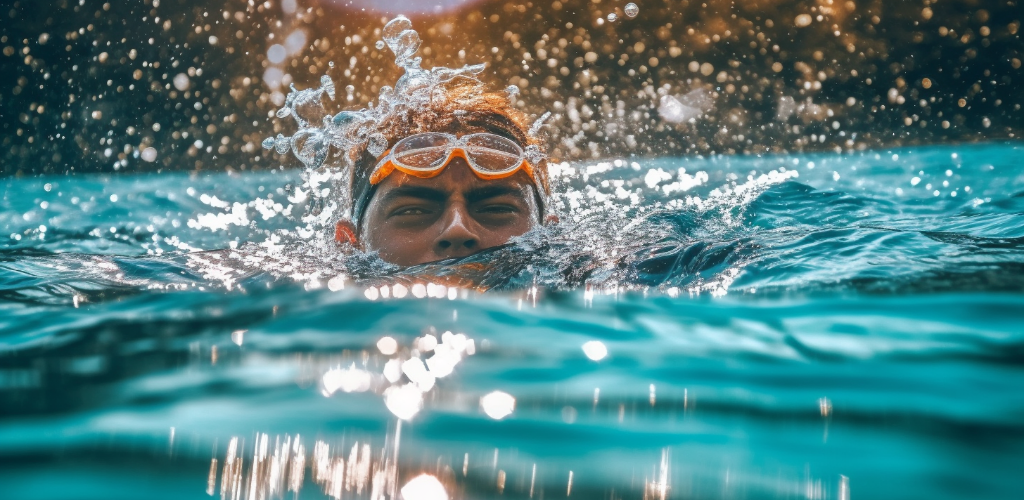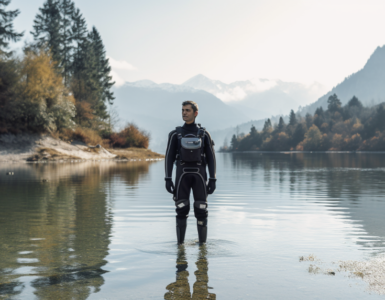Swimming is a skill that offers a multitude of benefits, and one of the styles that can significantly boost your water confidence and physical fitness is the elementary backstroke. It’s a swim style that’s not just enjoyable but also lends itself to being a great total body workout. But how familiar are you with the elementary backstroke technique drills? If you’re looking to learn or improve, you’re in the right place.
Understanding the Elementary Backstroke
So, what is the elementary backstroke? Originating as a survival technique, this swim style is designed to allow the swimmer to move on their back, keeping the face above water without much effort. Unlike other backstroke styles where the arms move in a circular pattern, the elementary backstroke involves a simpler, more synchronized movement.
Why is it beneficial to learn? Besides being a great way to build water confidence, it also offers a fantastic full-body workout. It’s a style that’s easy on the joints, making it a suitable choice for those with joint issues or those recovering from an injury.
The Key Components of Elementary Backstroke
Now let’s dive into the primary components of the elementary backstroke technique. Firstly, body alignment is crucial. The body should be flat on the water surface, with the back straight and the head in a neutral position.
Next, we have the arm and leg movements. The arms move in a synchronized manner – from the sides of the body, they bend at the elbows, push out to the sides, and then return to the starting position. The leg movement, known as the ‘whip kick’, involves bending the knees, kicking out to the sides, and then returning to the straight position.
Last but not least, timing is everything. In the elementary backstroke, the arm and leg movements should be synchronized for maximum efficiency and speed. So, how does this all come together? Let’s find out in the next sections!
Breaking down the Elementary Backstroke Technique
Learning to swim can be a daunting task, right? But once you understand the basic steps and practice consistently, it becomes much easier. The elementary backstroke technique is no exception. It’s all about getting the moves right and improving on them over time. Let’s dive into the details, shall we?
The Starting Position
Every good swim starts with a good position. In elementary backstroke, the initial body position involves floating on your back. Your arms should be at your sides, and your legs should be straight. Picture a starfish floating on the surface of the water. That’s you! This position allows for a strong start and a steady, streamlined glide.
The Arm Movement
What about the arms? Well, the arm movement in the elementary backstroke is simple yet crucial. Starting from the resting position at your sides, you bend your elbows to bring your hands up towards your armpits. Then, push your hands out to the sides, as if you were trying to form a T shape with your body. Finally, you sweep your arms down and return them to the resting position. This movement propels you through the water. Remember, timing is everything. Your arms should be in sync with your legs to maintain balance and maximize propulsion.
The Leg Movement
Now, let’s talk about the legs. The ‘whip kick’ is the typical leg movement used in the elementary backstroke. Imagine a frog kicking in the water. You keep your legs straight at first, then bend your knees to bring your feet towards your buttocks. After that, you whip your legs out to the sides, and then bring them back together, straightening them out. It’s important to note that the kick starts when your arms are at their widest point and ends as your arms return to their resting position. This ensures a well-coordinated stroke and keeps you moving smoothly through the water.
Mistakes to Avoid in Elementary Backstroke
Like any other swimming technique, mistakes are common when learning the elementary backstroke. But don’t fret! These are part of the learning process. Some common problems include unsynchronized arm and leg movements, bending the knees too much during the whip kick, and not keeping the body straight or the head still.
So, how can you avoid these mistakes? Practice, practice, practice! The more you repeat the correct movements, the more natural they will become. And don’t forget to ask for feedback. A swim buddy or coach can watch you and point out any areas you need to work on. Keep in mind that patience and persistence are key when learning a new swimming technique. You’ve got this!
Drills to Master the Elementary Backstroke Technique
Getting the hang of the elementary backstroke technique can be a bit tricky at first. But don’t worry, with the right drills, you can master this swimming style in no time. Drills help break down the technique into manageable parts, allowing you to focus on perfecting each component. You’ll be swimming like a pro before you know it!
Let’s start with some arm drills. These exercises will help you grasp the arm movement required for the elementary backstroke. They are designed to improve your coordination, timing, and strength.
- Chicken Wings: Start by floating on your back. Bend your arms at the elbows, making a chicken wing shape, then push your arms out to the sides and return them to the resting position.
- Touch and Push: Begin in the same floating position. Touch your shoulders with your fingertips, push your arms out to the sides and bring them back to the resting position.
- Full Arm Circles: Start by floating on your back. Extend your arms fully out to the sides, make a full circle, and return them to the resting position.
Now, let’s move on to some leg drills. These drills will help you master the ‘whip kick’ leg movement, which is a crucial part of the elementary backstroke. They will also work on your leg strength and flexibility.
- Whip Kick on Back: Start floating on your back. Bend your knees and bring your heels towards your buttocks, then whip your legs out to the sides and bring them back together.
- Whip Kick on Wall: Stand against the wall in the shallow end of the pool. Perform the whip kick movement while keeping your upper body stable.
- Alternate Leg Whip Kick: Float on your back. Perform the whip kick movement first with one leg, then with the other, alternating between the two.
Implementing Elementary Backstroke Technique into Workouts
Once you’ve got the basics down, it’s time to incorporate the elementary backstroke into your regular swimming workouts. But how do you do this effectively? Well, the key is to start slow and gradually increase the intensity and duration of your backstroke sessions. You could start by dedicating a small portion of your workout to the backstroke and gradually increase this over time. Remember, consistency is key!
Equipment to Aid in Elementary Backstroke Drills
Did you know that using certain swimming equipment can greatly assist in improving your elementary backstroke technique? It’s true! Tools such as kickboards, pull buoys, and fins can provide extra support and resistance, helping you to better understand and execute the movements. Let’s take a closer look at how these tools can benefit your training.
Kickboards can be used to isolate and focus on the leg movement. By holding onto the kickboard with your hands, you can concentrate solely on mastering the whip kick.
Pull buoys are excellent for isolating the arm movement. Placed between your thighs, they allow you to focus entirely on perfecting your arm strokes without worrying about your kick.
Finally, fins can be used to improve your kick technique and leg strength. They add resistance to your kicks, making your leg muscles work harder and thus, become stronger.
Progressing with Elementary Backstroke Technique
So you’ve been practicing the elementary backstroke technique, but how do you know you’re getting better? Tracking your progress is essential in this learning journey. It’s not just about doing the drills but being able to see and measure improvements. You may start to notice that you can swim longer distances without getting as tired, or that your whip kick is becoming more fluid and efficient. Setting achievable goals is also crucial. Perhaps you aim to swim a certain number of laps using the elementary backstroke technique without stopping or to decrease your lap times gradually. Remember, every small achievement is a step towards mastery.
The Role of a Coach in Perfecting the Elementary Backstroke
While self-practice and determination play a significant role in your swimming journey, having a professional coach or trainer by your side can make a world of difference. A coach doesn’t just provide instructions but offers personalized guidance based on your unique needs and progress. They can spot and correct technique errors that you may not notice, provide structured training plans, and offer encouragement when things get tough. Plus, their expert advice can help you enhance your overall swimming performance, not just in the elementary backstroke but in all swimming styles. So, isn’t it worth considering?
| Week | Distance Swam (meters) | Time Taken (minutes) | Coach’s Remarks |
|---|---|---|---|
| 1 | 100 | 5 | Good start, work on arm movements |
| 2 | 150 | 7 | Improvement in arm movements, focus on whip kick |
| 3 | 200 | 8 | Whip kick improved, maintain consistency |
| 4 | 250 | 8 | Overall performance improved, keep practicing |
The Joy of Mastering Elementary Backstroke
Finally, let’s not forget the ultimate reward – the satisfaction and joy that comes from mastering the elementary backstroke technique. Imagine the feeling when you glide through the water effortlessly, your body perfectly aligned, your arms and legs moving in harmony, and each stroke propelling you forward efficiently. It’s not just about swimming; it’s about the sense of achievement, the boost in confidence, and the doors it opens for further swimming accomplishments. So, keep practicing, keep improving, and let the joy of mastering the elementary backstroke fuel your swimming journey!




